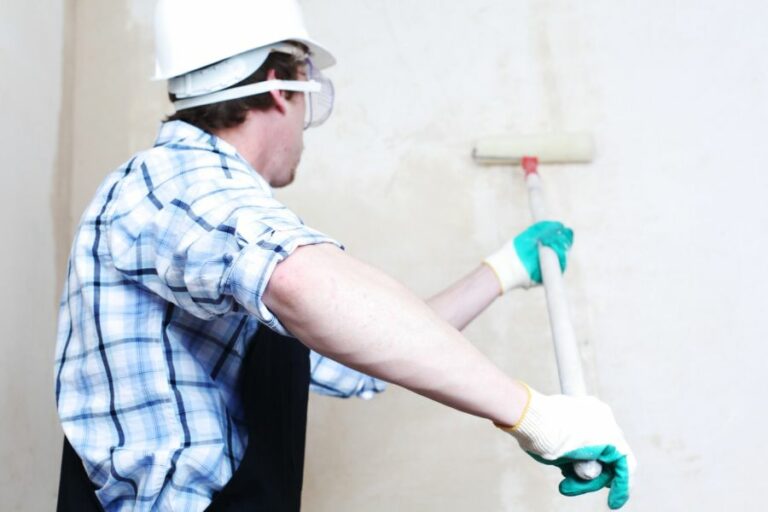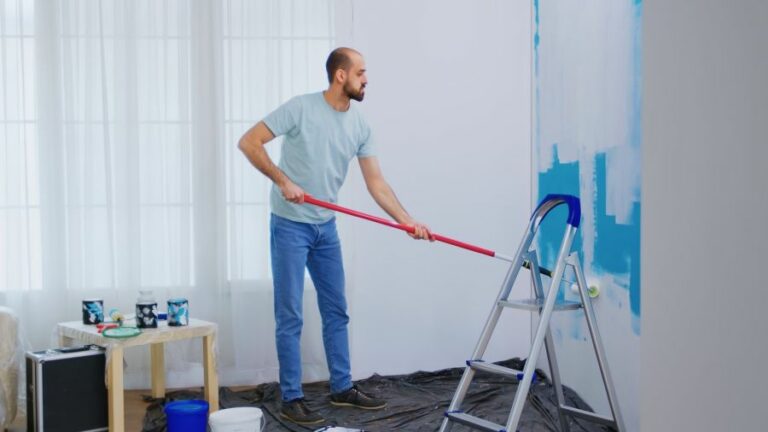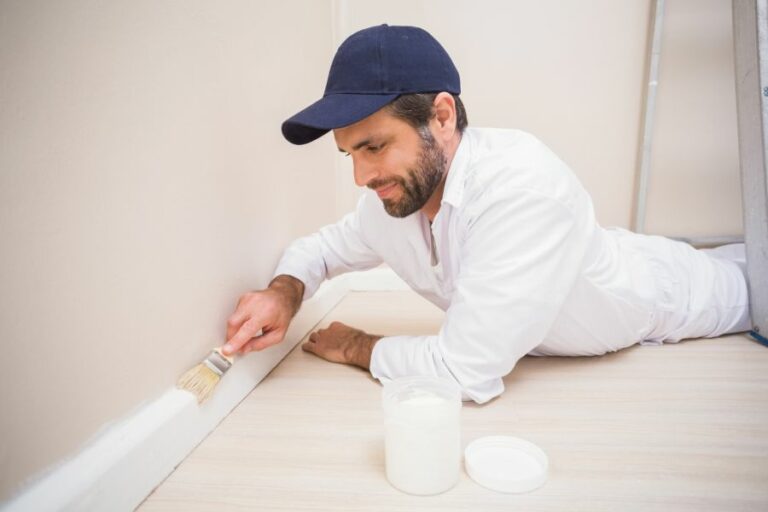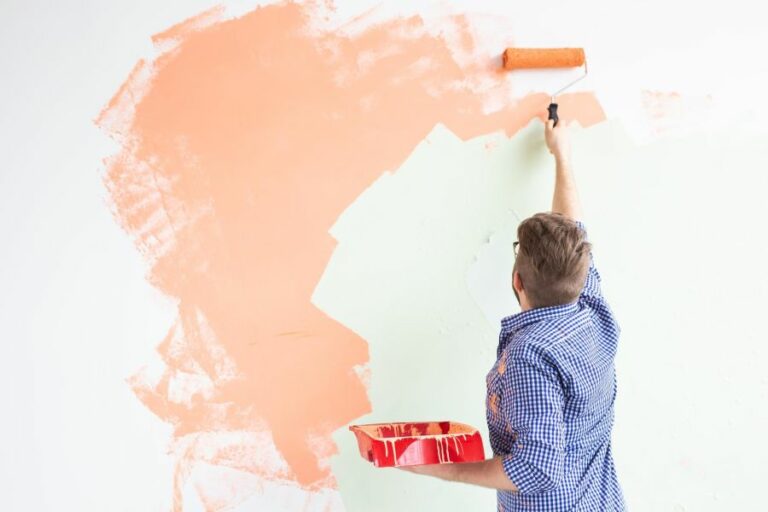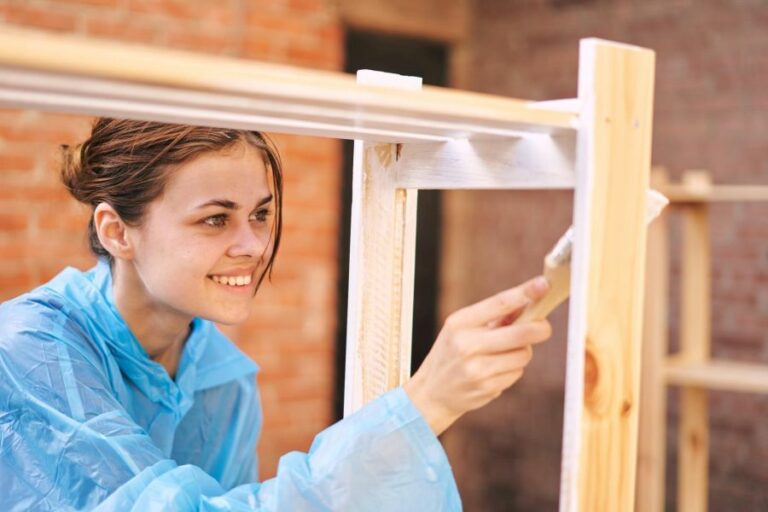The Proper Environment In Surface Preparation
The importance of a proper environment in surface preparation cannot be overstated, particularly when dealing with sensitive materials or adhering to strict industry standards. You’ve come to the right place, as we possess extensive knowledge and expertise in this area, and can undoubtedly help you create the ideal conditions for your specific needs.
The proper environment in surface preparation:
A proper environment for surface preparation involves maintaining specific temperature, humidity, and airflow levels to ensure the adhesion and durability of coatings. Key recommendations include maintaining temperature between 50°F (10°C) and 100°F (38°C), relative humidity between 40% and 70%, and utilizing effective ventilation systems. Monitoring environmental conditions and utilizing enclosures or climate control systems can help achieve these precautions.

Discover the significance of creating the proper environment in surface preparation as we dive into the optimal conditions and methods to ensure a successful project. Read on to unlock valuable insights and expert tips to elevate your workmanship.
Contents
- 1 Adequate Environment for Surface Preparation
- 2 Essential Factors to Consider in Surface Preparation
- 3 Optimal Environmental Conditions for Coating Applications
- 4 Environmental Standards for New Surface Painting Preparation
- 5 Surface Preparation: Understanding the Standard
Adequate Environment for Surface Preparation
• Introduction
Achieving a high-quality, lasting finish on any painting or coating project is highly dependent on proper surface preparation before application.
• Importance of Environmental Controls in Surface Preparation
Environmental factors such as temperature, humidity, and cleanliness of the surface preparation area can significantly impact the effectiveness of surface preparation, the adhesion of coatings, and the ultimate durability of the finished product.
Controlling these factors proactively can minimize the risk of project delays, costly rework, and premature failure of applied coatings.
– Temperature
The temperature of the environment and the surface itself can affect the performance of surface preparation equipment and materials, as well as the drying and curing of applied coatings.
When surface temperatures are too low, the effectiveness of surface preparation methods can be diminished, and the adhesion of coatings may be compromised.
On the other hand, when surface temperatures are too high, coatings can dry too quickly, leading to improper film formation and reduced coating performance.
Recommendation: Maintain an environment and surface temperature within the specified range of the coating manufacturer, typically between 50°F (10°C) and 100°F (38°C) for most industrial coatings.
– Humidity
Relative humidity plays a critical role in both the surface preparation process and the drying and curing of coatings. High humidity can inhibit drying and curing, leading to the formation of rust or moisture contamination on a prepared surface, and reduce adhesion.
Low humidity can cause coatings to dry too quickly, leading to poor film formation, pinholes, and defects in the finish.
Recommendation: Maintain the relative humidity within the specified range of the coating manufacturer, typically between 40% and 70% for most industrial coatings.
– Airflow and Ventilation
Proper airflow and ventilation during surface preparation are essential for the removal of dust, debris, and contaminants generated during the process. Insufficient airflow can result in poor quality surface preparation and contamination of the prepared surface.
Excessive airflow can result in uneven drying and curing of applied coatings and can introduce contaminants from uncontrolled areas.
Recommendation: Utilize local exhaust ventilation or properly designed air handling systems to remove dust and contaminants during surface preparation while maintaining a balanced and controlled airflow.
• Achieving Environmental Controls
– Monitoring and Documentation
Regular monitoring and documentation of environmental conditions during surface preparation is vital to maintaining compliance with specified conditions and identifying potential issues before they adversely affect the outcome.
Use calibrated, quality instruments to measure temperature, humidity, and airflow correctly.
– Enclosures and Climate Control Systems
The use of temporary enclosures or dedicated surface preparation and painting facilities equipped with climate control systems can help maintain the proper environment during the surface preparation process.
Enclosures can shield the work area from weather and environmental contaminants, while climate control systems regulate temperature and humidity levels.
– Preparing and Stabilizing the Environment
Before commencing surface preparation activities, invest time in preparing the work area and stabilizing environmental conditions. Remove potential contaminants, seal or enclose uncontrolled areas, and heat or chill the space as necessary to create a controlled environment within the specified conditions.
Recommendation: Allow environmental conditions to stabilize for at least 24 hours before beginning surface preparation, and maintain consistency throughout the duration of the project.
• Useful Resources
The Society for Protective Coatings (SSPC) and NACE International (now AMPP) provide guidelines and standards that address environmental control and surface preparation best practices.
Additional resources can be found through these organizations, including relevant standards addressing environmental controls, such as SSPC’s Guide 6 and Guide 12.
Essential Factors to Consider in Surface Preparation
Surface preparation is a crucial step in many industries, including construction, painting, coating, and flooring, among others. Properly preparing a surface ensures that the applied material adheres well, lasts longer, and performs as intended.
• Type of Material to be Applied
The materials that you intend to apply on the surface play a significant role in determining how you should prepare the surface. For instance, preparing a surface for painting is different from preparing it for a concrete overlay.
Different materials require distinct surface conditions to ensure optimal adhesion and bonding. Always consult the manufacturer’s guidelines and recommendations for proper surface preparation.
• Cleanliness of the Surface
Surfaces often have various contaminants like dirt, dust, grease, and oils that can negatively impact the bonding ability of the applied material. To ensure proper adhesion, always clean the surface thoroughly before any application. Depending on the kind of contaminant, cleaning methods might include:
- Dry cleaning: Using brushes or compressed air to remove loose particles and dust.
- Wet cleaning: Using water, detergent, or cleaning agents to remove grease, oils, and substantial dirt.
- Solvent cleaning: Applying solvents to dissolve and remove specific contaminants.
It is crucial to allow the surface to dry completely after cleaning to prevent any moisture-related issues.
• Existing Coatings or Residues
Sometimes, surfaces already have an existing coating, paint, or residue that must be removed before applying new material. Always assess the condition of the current coating or residue and determine the appropriate removal method, such as:
- Mechanical methods: Sanding, grinding, or blasting to remove loose, peeling, or poorly adhered coatings.
- Chemical methods: Using paint strippers or other chemical solutions to dissolve or soften the existing material.
- Heat methods: Applying heat to weaken the bond between the surface and the existing material for easier removal.
Always ensure that the removal process does not damage the underlying surface or create additional issues.
• Surface Profile and Texture
The surface texture and profile play a crucial role in the adhesion of materials. Some materials require a smooth surface, while others need a rough or textured surface for optimal bonding. Depending on the material and application, you might need to:
- Smooth the surface: Fill any holes, cracks, or irregularities with appropriate patching or leveling compounds.
- Roughen or texture the surface: Sanding, grinding, or blasting to create a profile that offers better adhesion.
Always consult the manufacturer’s guidelines to determine the required surface profile and texture for the applied material.
• Moisture Content and Humidity
Moisture can significantly impact the bonding ability of materials, causing adhesion failure, blistering, or other defects. Before applying any material, always assess the moisture content of the surface and surrounding environment. Key considerations include:
- Relative humidity: High humidity levels can affect the curing and drying of materials. Ensure that the application area is well-ventilated, or use dehumidifiers to maintain acceptable humidity levels.
- Surface moisture content: Conduct moisture tests, like the calcium chloride test or a hand-held moisture meter, to determine the surface moisture content. If the moisture content is too high, consider using moisture mitigation techniques before applying the materials.
• Ambient and Surface Temperature
Temperature plays a critical role in the curing and performance of materials. Always ensure that both the surface and ambient temperatures are within the manufacturer’s recommended range for the specific material. Temperature considerations include:
- Curing and drying times: Some materials require a specific temperature range to cure or dry properly. Application outside of these ranges can result in defects or poor adhesion.
- Material handling and storage: Improper handling or storage of temperature-sensitive materials might render them ineffective. Always follow manufacturer recommendations for handling and storage conditions.
- Temperature fluctuations: Be aware of potential temperature fluctuations during the application process, as these can impact curing, drying, and bonding.
• Conclusion
To ensure the success of your project, carefully consider these factors during surface preparation. Properly preparing the surface guarantees robust adhesion and optimal performance of the applied material.
Consult the manufacturer’s guidelines for specific recommendations, and always conduct necessary tests to verify that the proper conditions are met.
Optimal Environmental Conditions for Coating Applications
• Introduction to Coatings
Coatings play a vital role in protecting surfaces from corrosion, wear, and other environmental elements. These protective barriers or films are extensively used in various industries, such as automotive, aerospace, construction, and marine.
However, the effectiveness and durability of coatings depend on the environmental conditions to which they are exposed.
• Temperature and Thermal Stress
Temperature is one of the most critical environmental factors that affect coatings’ performance. High or low temperatures can cause expansion and contraction in the substrate, leading to stress in the coating material. This stress can cause the coating to crack or delaminate from the surface.
High Temperatures: For high-temperature environments, it is necessary to choose a coating with excellent thermal stability and resistance.
For instance, epoxy or silicone-based coatings can withstand temperatures up to 500°F (260°C). Such high-temperature-resistant coatings are commonly used in heat-exchanging equipment and industrial furnaces.
Low Temperatures: In low-temperature environments, the coating material should be resistant to cracking and possess flexibility. Polyurethane and acrylic coatings are known to provide excellent low-temperature flexibility, ideal for cold regions or cryogenic applications.
• Humidity and Moisture
The presence of humidity and moisture can significantly affect the performance of coatings, as it can cause swelling, blistering, or corrosion. Coatings that are exposed to high humidity or damp conditions must be resistant to water penetration and possess excellent adhesion properties to remain intact.
Coatings for High Humidity: Epoxy and polyurethane coatings are often chosen for high-humidity environments due to their notable resistance to moisture penetration and excellent adhesion properties.
Coatings for Immersion: For surfaces immersed in water, such as marine structures, specialized immersion-resistant coatings, like chlorinated rubber and vinyl ester coatings, are necessary to prevent corrosion and damage to the substrate material.
• UV Radiation and Sunlight
Prolonged exposure to UV radiation and sunlight can cause degradation and loss of color in coatings. To make sure the coating remains effective and aesthetically pleasing, UV-resistant coatings or stabilizing additives should be used.
UV-Resistant Coatings: Coatings with added UV-stabilizing additives, such as hindered amine light stabilizers (HALS), can protect the surface from UV-induced damage.
Moreover, fluoropolymer coatings are highly resistant to UV radiation, making them a popular choice for exterior applications in regions with high sunlight exposure.
Understanding the effects of UV radiation on coating materials is crucial to selecting the right coating for outdoor applications.
• Airborne Contaminants
Airborne contaminants, such as dust, dirt, salt, and industrial pollutants, can accumulate on the coated surface, compromising the coating’s integrity and appearance.
To minimize the impact of airborne contaminants, easy-to-clean or self-cleaning coatings should be considered for areas exposed to high levels of pollution.
Self-cleaning and Easy-to-Clean Coatings: Polytetrafluoroethylene (PTFE) and nanocoatings with hydrophobic properties are known for their self-cleaning or low-maintenance characteristics.
These coatings can resist the accumulation of dirt and contaminants, maintaining the original appearance and performance of the coated surface.
• Atmospheric Corrosion
Coatings exposed to aggressive environments containing corrosive gases or high levels of pollution must be resistant to chemical and atmospheric corrosion. In such cases, specially designed coatings with robust corrosion protection properties are employed.
Corrosion-Resistant Coatings: Zinc-rich primers and epoxy coatings offer excellent protection against atmospheric and chemical corrosion. Moreover, applying multiple coats or using a combination of barrier and sacrificial coatings can significantly enhance corrosion protection in aggressive environments.
The National Association of Corrosion Engineers (NACE) provides a wealth of information on corrosion and appropriate coatings for various applications.
• Conclusion
Selecting the appropriate coating for a specific environment requires a thorough understanding of the environmental conditions and the performance characteristics of different coating materials.
By considering the factors mentioned above, such as temperature, humidity, UV radiation, airborne contaminants, and corrosion, it is possible to select the most efficient and durable coating that will provide long-lasting protection to the surface.
Further research and consultation with coating experts will help ensure the highest level of performance in challenging environments.
Environmental Standards for New Surface Painting Preparation
The preparation of a new surface for painting is a critical process that can greatly affect the final outcome and durability of the paint job. To ensure a successful painting project, it is important to consider the various environmental requirements that influence the preparation process.
• Temperature Considerations
Temperature plays a vital role in the surface preparation process. Paint, as well as the cleaning and priming materials used, have specific temperature ranges at which they work best. In general, an ambient temperature of 50-85 degrees Fahrenheit (10-29 degrees Celsius) is recommended for most paints.
– Cold Temperature Effects
Applying paint on a surface at lower temperatures may cause it to dry slowly or not adhere properly. Moreover, the low temperature makes it harder for the paint to level out, leading to a poor finish.
The solvents in the paint may also evaporate more slowly, causing the paint to thicken and become difficult to apply.
– High-Temperature Effects
In contrast, painting in extremely high temperatures can lead to a range of issues. The paint can dry too quickly, resulting in a poor bond between the paint and the surface. It may also lead to uneven coverage and visible brush and roller marks.
• Moisture and Humidity Factors
The amount of moisture in both the surface and the surrounding environment is crucial to proper surface preparation. Moisture can affect the adhesion of the paint, leading to potential issues such as blistering, peeling, or a poor finish.
– Surface Moisture
Before painting, ensure that the surface is completely dry, be it wood, metal, or masonry. Damp surfaces can cause adhesion problems, leading to paint failure. Depending on the material, there are various ways to test the surface moisture:
- For wood surfaces, use a moisture meter to determine the level of moisture content. It is recommended not to paint wood with a moisture content higher than 15%.
- For masonry surfaces, you can perform a simple tape test. Attach a piece of plastic tape to the surface and leave it for 24 hours. If there is condensation on the tape or the surface area appears darkened, the surface is too damp for painting.
– Ambient Humidity
High humidity affects the rate at which the paint dries and may lead to slow drying times or cause the paint to remain tacky. Ideally, paint when the relative humidity is below 85%. Consider using a dehumidifier in enclosed spaces to reduce humidity levels.
• Ventilation Needs
Proper ventilation is crucial to ensure that any fumes from the paint or cleaning agents do not pose a health risk, as well as to facilitate the evaporation of solvents for proper paint drying. Make sure the area is well-ventilated by opening windows and doors or using fans to circulate fresh air.
• Dust and Contaminant Control
During surface preparation, it is essential to minimize dust and contaminants that can affect the paint’s finish.
- Prior to painting, clean the surface thoroughly to remove dirt, debris, and any other contaminants.
- Cover furniture and other items with drop cloths to protect them from dust and paint.
- Use a vacuum with a HEPA filter to clean up dust and residue from sanding and surface preparation processes.
• Surface Preparation Guidelines
Now that we have discussed the various environmental factors, here are a few surface preparation guidelines to follow:
- Ensure that all surfaces are clean, dry, and free of any contaminants before applying paint.
- Sand rough surfaces and remove any loose or peeling paint.
- Prime surfaces if required, particularly new or bare surfaces, or if covering a darker color with a lighter one.
• Conclusion
To sum up, the proper preparation of new surfaces for painting demands careful attention to a range of environmental factors such as temperature, moisture, humidity, ventilation, and contaminants. Keeping these factors in mind will help ensure a successful painting project with a durable and high-quality finish.
Requirement | Description |
|---|---|
Temperature | Surface and air temperature should ideally be between 50°F (10°C) and 85°F (29°C) during surface preparation and painting. |
Humidity | Relative humidity should be below 85% to ensure proper drying and adhesion of paint. |
Surface dryness | Ensure surfaces are completely dry, free of dampness and moisture, to allow for proper adhesion of paint. |
Cleanliness | Surfaces should be clean, free of dust, dirt, grease, and oils to ensure the paint adheres properly. |
Ventilation | Proper ventilation is necessary to control fumes and airborne particles during surface preparation and painting. |
Protection against environmental contaminants | Protect surfaces from environmental contaminants like rain, dew, dust, and pollen during surface preparation and painting. |
Sunlight | Avoid direct sunlight while preparing and painting surfaces, as it can cause the paint to dry too quickly and affect adhesion. |
Surface Preparation: Understanding the Standard
Surface preparation is a crucial step in the process of applying protective coatings, paints, and other treatments to various materials. The quality of surface preparation can significantly impact the performance and durability of the applied coating.
• Importance of Surface Preparation Standards
Surface preparation standards serve as guidelines for professionals in the coatings industry to achieve a consistent level of quality in their surface preparation processes.
These standards help ensure that the treated materials (such as metals, concrete, or wood) have the proper surface profile, cleanliness, and other characteristics necessary for the applied coatings to adhere effectively and provide long-lasting protection.
By adhering to established surface preparation standards, professionals can ensure that their work meets the stringent requirements of various industries, such as the automotive industry, marine industry, aerospace industry, and more.
These standards enable professionals to provide a high level of service and ensure the longevity and performance of their client’s investments.
• Common Surface Preparation Standards
Several organizations and agencies develop and maintain surface preparation standards. Some of the most widely recognized and used standards come from:
- International Organization for Standardization (ISO): The ISO develops and maintains a broad range of standards, including those related to surface preparation. One of the most well-known ISO standards for surface preparation is ISO 8501, which covers the preparation of steel surfaces before applying paints or related products.
- Swedish Standards Institute (SIS): The Swedish Standards Institute, also known as SS, develops the widely-used Swedish Standard (Sa) for surface preparation, which focuses primarily on the cleanliness of surface and levels of remaining contaminants.
- National Association of Corrosion Engineers (NACE): NACE International is a professional organization dedicated to the study of corrosion and its prevention, and they have developed several surface preparation standards for various substrates and coating types.
- Steel Structures Painting Council (SSPC): The SSPC is an association focused on advancing the use of coatings to protect various materials and structures. They have developed numerous surface preparation standards, particularly for steel surfaces.
- ASTM International: Formerly known as the American Society for Testing and Materials, ASTM International publishes a wide range of standards, including those related to surface preparation for different substrates, such as concrete, wood, and metals.
While a comprehensive overview of every surface preparation standard is beyond the scope of this article, it’s essential to be familiar with the various organizations and their respective contributions to the field.
• Factors to Consider When Selecting a Surface Preparation Standard
When selecting a surface preparation standard for a specific project or application, several factors must be considered. Some of these factors include:
- Substrate Material: The type of material being treated (e.g., steel, concrete, wood) will often dictate the most appropriate surface preparation standard to be used.
- Coating Type: The type of coating being applied (e.g., paint, galvanization, anodizing) will play a significant role in determining the proper surface preparation standard.
- Application Environment: The environment in which the treated surface will operate (e.g., marine, industrial, commercial) can greatly impact the necessary level of surface preparation and the associated standard to be used.
- Industry Requirements: Some industries, such as automotive or aerospace, may have more stringent requirements or specific standards that must be adhered to for compliance.
- Performance Requirements: The performance requirements of the applied coating (e.g., corrosion resistance, abrasion resistance, adhesion) will influence the need for a particular surface preparation standard.
By considering these factors, professionals can select the most appropriate surface preparation standard for their specific needs and ensure optimal coating performance.
• Practical Recommendations for Surface Preparation
Based on my personal experience, I recommend adhering to the following practices when preparing surfaces for coatings:
- Select the appropriate surface preparation standard: As mentioned previously, understanding the substrate material, coating type, application environment, and other factors can ensure you select the most appropriate standard for the job.
- Properly train and educate personnel: Ensuring that all personnel involved in surface preparation are well-trained and knowledgeable about the selected standard will promote consistent and high-quality results.
- Monitor and inspect the surface preparation process: Performing regular inspections and quality control checks throughout the surface preparation process will help identify any deficiencies and ensure that the required level of surface cleanliness and profile is achieved.
- Document the surface preparation process: Maintaining thorough records of the surface preparation process, including the standard used, methods employed, and results of inspections, will help to demonstrate compliance with industry requirements and facilitate future reference and analysis.
For additional information on surface preparation standards, along with helpful resources such as guides, training, and certification programs, I recommend visiting the websites of the aforementioned organizations, along with resources such as the American Coatings Association and the American Institute of Steel Construction (AISC).
In conclusion, surface preparation standards are essential for achieving optimal coating performance and ensuring the longevity and protection of treated materials.
By selecting the appropriate standard, properly training personnel, and diligently monitoring and documenting the surface preparation process, professionals can provide high-quality, reliable services to their clients.

